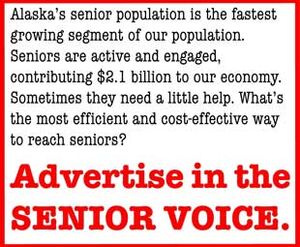Investing for your conscience, and pocketbook
Environmental, social and governance investing
December 1, 2018
What’s not black and white, but green all over? Environmental, social, and governance investing, or ESG. ESG investors evaluate and invest based on corporate behavior as a predicator of future financial performance. After wading into ESG investing a couple of decades ago, I have found that “investing for good” has become a successful and rewarding strategy to prepare me for retirement.
ESG investing, like any type of investing, is not black and white. All of us stress over saving and the safety of our savings. Wondering what our invested dollars are supporting seems to add complication to already difficult decisions. Some investors care deeply about what their investments support, but fear that adding ESG criteria may put a drag on their return.
Nevertheless, what once was an outlier strategy has become the norm. Globally, about 70 percent of asset owners incorporate ESG criteria, according to a Morgan Stanley survey released in mid-2018. The majority of respondents began doing so in the past four years. For over three-fourths of these people, the prime reason given for their change in strategy is risk management, followed closely by return potential and mission alignment.
Driven by the building of investor interest, companies are now anxious to showcase their social and environmental awareness. Some of this undoubtedly is window dressing, but the public’s increased scrutiny raises the standard.
People are investing mindfully, and companies are improving their practices along with their images. But is ESG profitable? Would it be better to make more money in “sin stocks” and invest the profit in your social cause of choice?
That is certainly one option, but I believe that incorporating ESG criteria into investment analysis is consistent with fiduciary responsibility. Research bears this out, in findings from organizations as diverse as Oxford University, Morgan Stanley Institute for Sustainable Investing, TIAA - CREF Asset Management, and the United Nations Environment Programme Finance Initiative. It is true that you can uncover a statistic to support nearly any point, but a study of studies demonstrates the trend. A 2015 meta-analysis by Deutsche Asset & Wealth Management with Hamburg University found that the majority of over 2,000 studies showed a positive correlation between ESG standards and corporate financial performance. In other words, businesses who care about corporate responsibility are well-run and profitable.
ESG analysts incorporate a variety of strategies to research companies or industry sectors. Mutual fund and exchange traded fund (ETF) managers may use positive or negative screening or a more nuanced approach. Positive screening selects companies with a positive ESG performance, while negative screening excludes ones where the entity is involved in activities that fail the screen. Some investment managers use ESG factors in their financial analysis in choosing portfolios. Impact investing and sustainability-themed investment screens look at companies whose missions seek to solve social or environmental problems or address sustainability.
If you decide to invest your funds with an eye to social responsibility, mutual funds and exchange-traded funds (ETFs) may be a better first step than individual stocks. ETFdb.com, a website source of information on ETFs, lists some 320 socially responsible funds. Their website offers a screener that helps track ETFs which employ ESG criteria. Additionally, some 50 ETFs seek companies with ESG criteria as part of their missions. One of these ETFs, iShares MSCI KLD 400 Social ETF (DSI), has close to one billion dollars under management, according to Investopedia.
If you have room in your portfolio and time for ongoing research, you may want to seek investments in companies with a good record of ESG decision-making. Newsweek periodically publishes an article which lists their analysis of the best “green” companies. Early-state investors can look to the Investors Circle, which calls itself “the world’s largest and most active early-stage impact investing network.” Early stage investments are highly risky because they’re small and often unproven. If you peruse their website, though, you may find one that not only seems like an idea worth trying but an investment worth betting on.
Whether you invest in your local community or internationally, in individual companies or a broad-base fund, nothing takes the place of direct research for understanding what you’re buying. A fee-only planner or advisor can help you avoid big mistakes. Particularly for those of us approaching or newly in retirement, it’s important to understand what eggs you have in your basket, and why.
After the longest bull market ever recorded, we have entered that volatile period where only hindsight will tell us whether each market drop was a pre-shock or the “big one.” We don’t know if today’s prices are still relatively high, or the new low base on which to build a new portfolio.
Investors, particularly seniors, should take care to invest only funds not needed for the next business cycle, say five to seven years. ESG investing will be sustainable as long as people care about their environmental, social, and governance footprint. Investing is never black and white, but its long-term prognosis is green.
ESG websites
Forum for Sustainable and Responsible Investment
Investors Circle:
https://www.investorscircle.net
Top Green Companies in U.S. (2016)
https://www.newsweek.com/green-2016/top-green-companies-us-2016
Database of Exchange Traded Funds (ETFs)
http://etfdb.com/; screen for ESG
Karen Telleen-Lawton helps seniors help themselves by providing bias-free financial advice. She is a Certified Financial Planner professional, the Principal of Decisive Path Fee-Only Financial Advisory in Santa Barbara, Calif.










